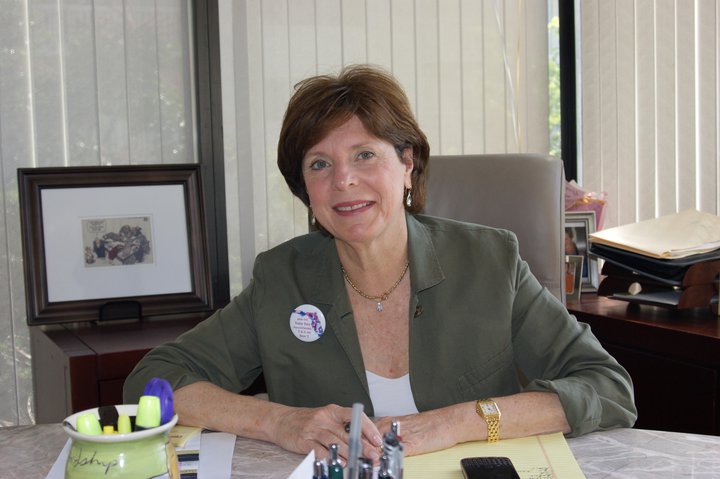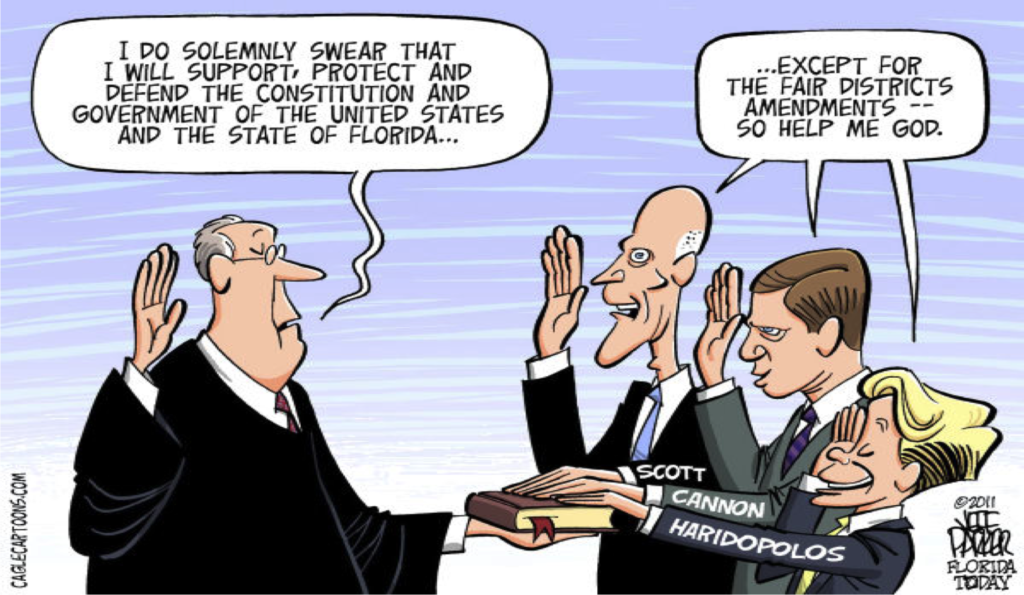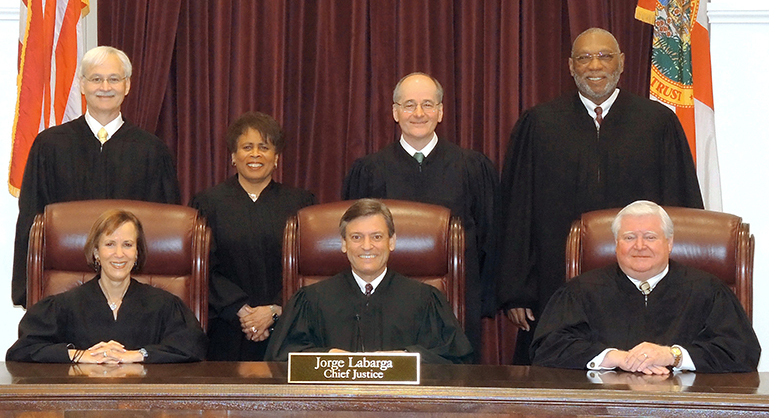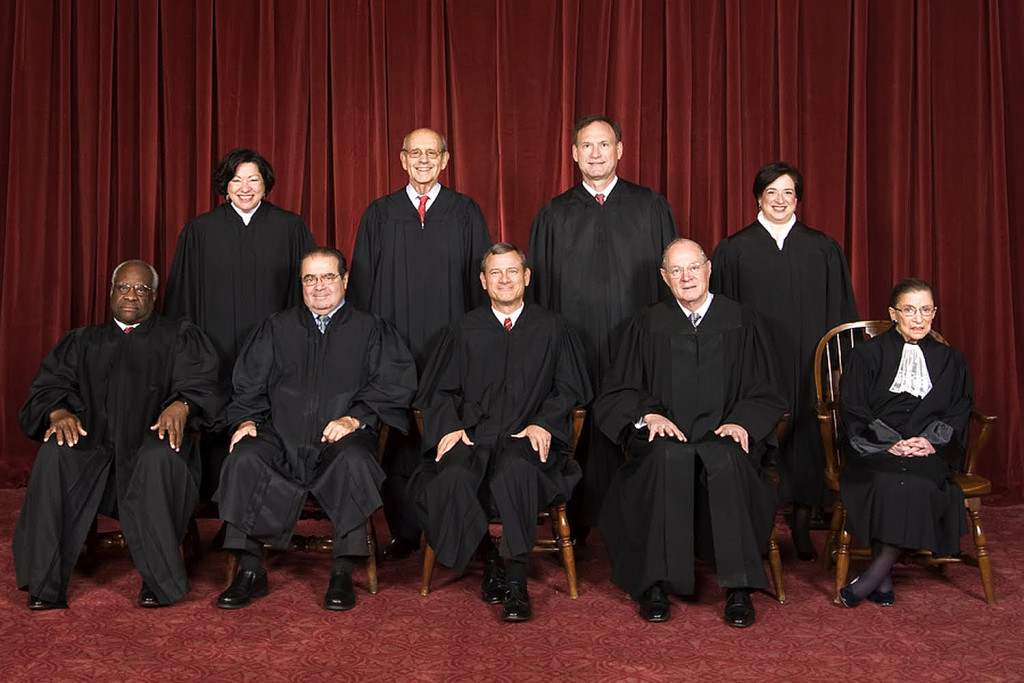 Combat Rigged Elections:
Combat Rigged Elections:
Fix Gerrymandering
 Combat Rigged Elections:
Combat Rigged Elections:Fix Gerrymandering
Bold Gerrymander Reform Opens Up Florida Politics
Orlando – With the 2020 census likely to trigger a new wave of partisan gerrymandering of congressional districts, the bold and sweeping gerrymander reform adopted by Florida and put into play this year for the first time offers a path toward a more level playing field – if other states will heed the Florida’s story.
Thanks to their shrewd RedMap national gerrymander strategy of 2011, House Republicans won bonus seats in 2016 for the third election in a row. This year, the GOP won 49.7% of the national popular vote for House candidates, but garnered 55.2% of the House seats. This is in large part due to the fact that Voting Rights were violated in many states during this election.
In Florida, however, the tide turned the other way. In January, Florida’s House delegation will include five new members whose road to victory was opened by a determined and tenacious nine-year battle to throw out the partisan stacking of election districts by the Republican-led legislature and to replace it with more competitive, voter-friendly districts.

In Florida, Democrats Stephanie Murphy (L), Val Demings (C), and Charlie Crist (R), won after gerrymander reform.
In south-central Orlando, former city police chief Val Demings won the seat held for three terms by Tea Party Republican Dan Webster, giving African Americans a fourth House member from Florida. North of Orlando toward Winter Park, Stephanie Murphy, a young Rollins College lecturer, scored a stunning upset over 12-term incumbent Republican John Mica.
Around St. Petersburg, former Gov. Charlie Crist, a Republican-turned-Democrat, won a remapped district from Republican incumbent Dave Jolly. In north Florida, two Democratic incumbents were also ousted after court-ordered remapping of their districts. One lost to a Republican; the other, to a fellow Democrat. And in the years ahead, more turnovers are likely.
In a Miami congressional district modestly remapped by court order, 14-term Republican Rep. Ileana Ros-Lehtinen, dean of the Florida Congressional delegation, broke with her party and came out for a$15 an hour minimum wage. Aided by that policy shift, widely seen as a bid to win from Democratic and independent voters, Ros-Lehtinen won re-election in 2016. But political analysts expect her district to be highly competitive once she retires.
The GOP Legislature’s Clandestine Gerrymander
The Florida gerrymander story is a classic case of reform powered by a grass roots citizens movement. Its springboard was a popular referendum in 2010 that for the first time in American history did what the U.S. Constitution fails to do: It outlawed the manipulation of election district boundaries by the state legislature “with the intent to favor” one political party over the other or to protect incumbents.
Even with that law written into the state constitution, reform was no slam dunk. In defiance of what the voters had just adopted in November 2010, the Republican legislature in 2011 carried out a clandestine, illegal gerrymander of congressional and legislative districts while pretending to obey the will of the people.
The Republicans employed a covert network of political consultants to create maps stacked in favor of the GOP, with murky code names like Frankenstein, Schmedloff, and Perfect Pieces, and then passed those maps to legislators through unwitting intermediaries. It took four years of legal trench warfare and computer sleuthing to expose the conspiracy and to persuade Florida courts to outlaw and rewrite the fraudulent gerrymander.
Listening to Minority Views, Shifting Strategy
Five previous gerrymander reform campaigns in Florida had failed. A massive petition drive in 2005 by Common Cause and other reformers to set up a popular referendum was thrown out at the 11th hour by the Florida Supreme Court, which found flaws in the 75-word ballot summary of the reform.

Ellen Freidin, leader of Florida’s victorious Safe Districts coalition.
A year later, reformers approached Ellen Freidin, a politically-savvy Florida attorney with statewide campaign experience, to lead a new drive. Friedin was sympathetic, but wary. As a legal expert, however, Freidin thought that she could fix what had gone wrong. So she agreed to re-write the wording of the reform measure. That’s all.
Freidin quickly discovered that redrafting ballot language involved more than wordsmithing. It meant listening to diverse constituencies, heeding their advice and painstkaingly pulling together a broad political coalition that embraced not only Common Cause and the League of Women Voters, but the NAACP and the FLorida-based Latino movement, Democracia Ahora, Democracy Now.
“You have to give them a voice so they have ownership,” Freidin said. She learned what reformer sin some other states have overlooked – that Blacks and Latinos oppose a bipartisan citizen commission for redistricting because they fear that their political interests as minorities will not be adequately protected.
So Friedin dropped that idea and focused on defining a legal standard for illegal partisan gerrymandering. She came up with several different wordings for her ballot initiative and then had pollsters run focus groups to test precisely which reform language resonated most tellingly with voters. The Answer: What galls voters most is a system that enables incumbents to stack the deck to keep themselves in office.
News Cartoons Mock the Legislature
Gradually, Ellen Friedin got drawn into creating a new movement called Fair Districts Florida and running a $9 million reform drive that would collect 1.7 million signatures in order to qualify two amendments to the Florida constitution for a popular vote in the election of 2010.
 Next came a sophisticated, high-profile media campaign with TV ads of foxes guarding hen houses, mocking legislators for pretending to be fair while creating monopoly districts for themselves. Freidin recruited a bipartisan leadership, won editorial endorsements and pro-reform cartoons from every major newspaper in the state, and eventually went toe-to-toe with legislative leaders who called her to a public hearing and tried to intimidate her and discredit the reform movement. But that only added to the public uproar for reform.
Next came a sophisticated, high-profile media campaign with TV ads of foxes guarding hen houses, mocking legislators for pretending to be fair while creating monopoly districts for themselves. Freidin recruited a bipartisan leadership, won editorial endorsements and pro-reform cartoons from every major newspaper in the state, and eventually went toe-to-toe with legislative leaders who called her to a public hearing and tried to intimidate her and discredit the reform movement. But that only added to the public uproar for reform.
On Nov. 2, 2010, Fair Districts Florida achieved the well-nigh impossible. In a mid-term election where Floridians elected a Republican governor and legislature, Fair Districts won an astounding 62.6% supermajority (3,155,1249 yes votes) for amendments that wrote an unprecedented ban on partisan gerrymandering into the state constitution.
Winning the Vote Is Only Half the Game
But, Friedin learned, the battle was only half-won. The morning after the election, a sitting Republican and Democratic member of Congress filed a joint lawsuit because gerrymander reform threatened their seats. Then the state legislature embarked on the double game of pretending to comply with the new constitutional rules in public while covertly evading them. When the legislature’s gerrymander plan surfaced in 2011, the reformers of Fair Districts Florida saw at once that they had been outfoxed.

Florida Supreme Court’s 5-2 ruling shakes up state’s political landscape.
The League of Women Voters and Common Cause went to court. They met resistance from the legislature at every step: lawmakers destroying potentially incriminating documents, contending they had legislative privilege protecting the privacy of their records, and highly paid GOP consultants stonewalling legal investigators – until the state’s supreme court ordered them to open up and one Republican consultant, Marc Reichelderfer, broke ranks. Unlike the Republican lawmakers, Reichelderfer and other GOP hired hands had kept their records.
Under questioning by David King, lead attorney for the Fair Districts coalition, Reichelderfer’s admissions led to emails, documents, meetings, and finally to electronic versions of the crucial electoral district maps created by software that enables the user to zero in on a voting tract and get the computer to spit out data on how many whites, blacks, Latinos, Democrats, Republicans, independents live there, what’s their past voting record and precisely where to draw the lines to favor your own party.
With the GOP consultants exposed, the reformers’ legal team had to link the consultants’ plans with the legislature’s ultimate actions. Cleverly and covertly, the consultants had arranged for their stacked gerrymander plans to be passed to Republican lawmakers in public hearings through unwitting go-betweens. It took a team of electronic sleuths to crack the code of the gerrymander conspiracy, to match the outside maps with the inside maps, and then to prove to a Florida judge that pro-Republican maps produced by Reichelderfer & Co. were ultimately the same as those adopted by the legislature.
Florida Supreme Court Wields a “Wrecking Ball” – See Interactive Maps Below
In July 2014, Florida Circuit Court Judge Terry Lewis found the GOP legislature guilty of an illegal gerrymander “tainted with unconstitutional intent.” He ordered the legislature into special session to redraw the maps for two Congressional districts.
The legislature went through the motions of complying, but in fact only tinkered mildly with its original plan. With an election campaign already under way, Judge Lewis accepted the changes. But the Fair Districts coalition, totally dissatisfied with the court’s acceptance of a token correction, appealed to the state supreme court.
In July 2015, came the thunderbolt. As the Miami Herald reported, the Florida Supreme Court “took a wrecking ball to Florida’s political landscape.”
In a blistering 5-2 ruling, the high court described the legislature’s covert conspiracy in detail, condemned the legislature’s “blatantly unconstitutional” gerrymander, and ordered eight congressional districts to be redrawn as well as the maps for the entire state senate. Within a month, the Florida Senate admitted publicly that it had broken the law with a partisan gerrymander.
“Restoration of Representative Democracy”
In late 2015, two circuit judges lowered the boom. Judge Terry Lewis fashioned a new map for congressional districts, relying heavily on maps provided by Common Cause and the League of Women Voters because the two houses of the legislature could no longer agree on a plan of their own.
The Lewis formula, experts predicted, would make up to 10 of Florida’s 27 districts more competitive, accurately forecasting that the new, more politically balanced and competitive districts would probably unseat three or more of Florida’s incumbent members of Congress.
Another circuit judge rejected the legislature’s twice-revised plan for state senate districts and adopted a rival plan from the League of Women Voters and Common Cause that made many more of the 40 senate districts competitive. For the reformers, it didn’t matter which party benefited; only that the voters were given a more genuine choice.
In the end, attorney David King, who had argued the Fair District case before the Florida Supreme Court and lower courts, asserted that the final outcome had far exceeded expectations, achieving a major “victory for the people of Florida and for restoration of representative democracy.” And in the election of 2016, that legal victory played out.
___________________________________________
“It’s a Fight about Who Gets to Speak for Arizona”
You don’t normally think of Arizona as a hotbed of populist rebellion against the political Powers-That-Be but that’s what’s been happening for the past 15 years – a combative tug-of-war pitting The People versus the Politicians. And believe it or not, the People have been winning. It’s an eye-opener for other states to learn from.
“Every once in a while, an issue comes along that makes so much sense and so clearly embodies the basic principles of democracy, people put aside their partisan differences and take action to protect the collective interest of citizen self-government,” says Jim Pedersen, who led Arizona’s Fair Districts, Fair Elections popular movement.
Reread those ringing phrases about “citizen self-government” and you’ll understand how the direct democracy movement for fired up in Arizona in 2000. Fair Districts, Fair Elections, the umbrella organization, mobilized a coalition of grass roots groups and volunteers pitting the will of the people against the self-interest of entrenched politicians bent on clinging to power.
 People Power Confronts the Powers-That-Be
People Power Confronts the Powers-That-Be
Their specific target was to put a popular referendum on the 2000 election ballot for an amendment to the state constitution that would halt partisan gerrymandering of Arizona’s congressional and legislative districts and to replace it with a politically independent redistricting commission.
“The legislature has created a system that distorts representative democracy,” declared Jim Pedersen, who chaired the multi-partisan grass roots movement. “Allowing legislators to draw (their own district) lines is the ultimate conflict of interest.…We share a responsibility to step forward and correct this systemic flaw.”
A sharp battle broke out. The push for reform was spearheaded by the League of Women Voters, Common Cause and Janet Napolitano, then Arizona’s attorney general. It ran into sharp opposition from the Arizona Chamber of Commerce, from five sitting Republican members of Congress from Arizona and from leaders of the Arizona legislature.
Round #1 – Battle at the Ballot Box

Former Supreme Court Justice Sandra Day O’Connor meets with Arizona’s Independent Redistricting Commission. (2011 AZ IRC)
But in spite of legal challenges and heavy opposition spending, the reform movement won a solid 56.1% majority in favor of an amendment to the state constitution that broke the politicians’ grip on gerrymandering. It created a five-member independent commission with a multi-party membership that blocked either major party from controlling the process of redistricting.
To break the dominating grip of the major parties, Arizona’s constitutional amendment set tough parameters. It barred active or recent political candidates, officeholders and party strategists from serving on the commission and it gave independents the balance of power on the commission. In fact, the two commission chairs since 2001 have been political independents.
Aiming to give Arizona voters more choice in future elections, the Arizona measure endorsed the creation of politically “competitive districts” and forbade the use of party registration, voting history data and residences of incumbents and other candidates in mapping political districts.
Support from Sandra Day O’Connor
Although the commission’s first redistricting maps in 2001 were generally accepted, the battle over gerrymander reform in Arizona flared again a decade later. By 2010, American politics had become more sharply polarized. The 2010 elections spawned the Tea Party movement and a more rancorous brand of politics that rejected compromise as unprincipled.
With Arizona gaining another congressional seat because its population had grown by 1,261,585 since 2000, interest was intense in how the new district lines were drawn.To calm the waters, former Supreme Court Justice Sandra Day O’Connor, also a former Republican majority leader of the Arizona senate, hailed the importance of the independent commission and urged its members to be “fair and impartial” in their work. “Do it well,” she concluded. “We’ll thank you later.”
But thanks is not what the commission got. It came under sharp partisan fire from disgruntled Republican as toon as it the new maps for Arizona’s congressionl and legislative districts in October 2011. Tea Party Republicans and other GOP hard-liners squawked that the new district maps favored Democrats.
Round #2 – GOP Attack on the Commission
In fact, the commission’s 2011 redistricting plan created four safe districts for Republicans, two safe districts for Democrats and three highly competitives districts. The commission passed the plan by a 3-1 vote but the two Republican commissioners balked – one abstained and the other voted no.

Arizona Gov. Jan Brewer (left) ((CC) Gage Skidmore) tried to unseat Colleen Mathis (right), Chair of the Arizona Independent Redistricting Commission.
Governor Jan Brewer, a Republican, angrily ordered the impeachment and removal of Colleen Mathis, the AIRC’s independent chair. The goverenor charged that Mathis had not followed proper procedures and had created a plan that increased chances of electoral gains for Democratic. Legally, the firing of Mathis require two-thirds approval of the state senate, and in a straight, 21-6, party-line vote, the Arizona Senate backed Governor Brewer. With the commission paralyzed, Mathis filed a legal appeal.
In just two weeks, the Arizona Supreme Court heard the case and immediately revoked Governor Brewer’s order, saying it was illegal, and in a unanimous, bipartisan 5-0 decision, the court ordered Mathis reinstated as AIRC chair. Brewer testily denounced the court’s action. Mathis later commented: “Fortunately, we live in a country with three branches of government, and I’m grateful for the checks and balances that exist.” The commission then finalized its redistricting plans for the 2012 election.
Round #3 – Taking the Fight to the Supreme Court
But that ruling just stoked the controversy. The foes of reform dug in their heels and escalated their legal warfare. On June 6, 2012, the Arizona Legislature filed a federal court suit, challenging the legitimacy of the Arizona Independent Redistricting Commission. The Election Clause of U.S. Constitution, it argued, states that “[t]he Times, Places and Manner of holding Elections for Senators and Representatives, shall be prescribed in each State by the Legislature thereof” and that this function cannot be taken over by any other body.
In rebuttal, advocates of the independent commission contended that that the popular referendum vote in 2000 establishing the Arizona Independent Redistricting Commission constituted legislative action by the people of Arizona exercising the power granted them by the Arizona constitution.
Before any court ruled, the November 2012 elections went as Republicans had feared. Democratic congressional candidates won all three of the new competitive districts, giving Democrats a 5-4 edge in the state’s congressional delegation. Then in February 2014, a three-judge federal appeals court panel dismissed the Arizona legislature’s case against the independent redistricting commission.
Is the Pendulum Swinging Against Reform?
Just when the issue seemed settled, the U.S. Supreme court agreed to hear an appeal from the Arizona legislature, and the pendulum seemed to be swinging against reform. Legal analysts saw no reason for the Supreme Court to take the case unless several justices were bent on overturning the appeals court ruling.
Moreover, they reasoned that the legislature’s case based on the literal wording of the U.S. Constitution was a slam dunk to win support from strict constructionists like Chief Justice John Roberts and Associate Justices Antonin Scalia and Samuel Alito. And in fact, their leanings were confirmed when the court heard oral arguments in March 2015.

The Roberts Court
Reformers feared that if the high court were to strike down the Arizona redistricting commission, it would not only affect California and other states with similar commissions but it would be the death knell for citizen initiatives against gerrymandering. “It would be a terrible thing if the courts were to overturn what the people overwhelmingly said they wanted,” commented Rep. Eric Swalwell, a California Democrat.
Green Light from the Supreme Court
The Supreme Court decision on June 29, 2015 hit like a thunderbolt. It was a surprise. By 5-4, the high court ruled in favor of the Arizona redistricting commission, agreeing that the popular vote in favor of the independent commission constituted a legislative act by the people of Arizona.
Writing for the majority, Justice Ruth Bader Ginsburg asserted that the Constitution’s reference to the “Legislature” encompasses citizen power. “The animating principle of our Constitution is that the people themselves are the originating source of all the powers of government,” Justice Ginsburg wrote.
Drawing a quotation from the Federalist Papers, Justice Ginsburg commented that “The people of Arizona turned to the initiative to curb the practice of gerrymandering and, thereby, to ensure that Members of Congress would have ‘an habitual recollection of their dependence on the people.”
That outcome not only surprised and cheered citizen activists but emboldened them to press for reforms in other states. They saw the Supreme Court’s ruling not merely as an endorsement of Arizona’s independent redistricting commission but as a green light for reform movements in other states that have already begun to mount both legal and political challenges to the narrow self-interest of partisan gerrymandering.
Issue Brief Progress Report Additional Readings Organizations

 Hedrick Smith, who conceived this website and is its principal writer and architect, is a Pulitzer Prize-winning former New York Times reporter and Emmy award-winning documentary producer for PBS and PBS FRONTLINE.
Hedrick Smith, who conceived this website and is its principal writer and architect, is a Pulitzer Prize-winning former New York Times reporter and Emmy award-winning documentary producer for PBS and PBS FRONTLINE. 


